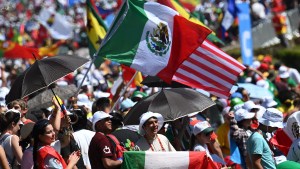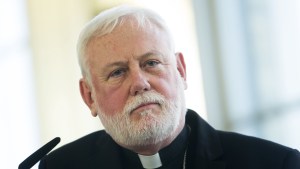A “fascinating figure” … the Vatican’s secretary for relations with states, Archbishop Paul Gallagher, made no secret of his admiration for Cardinal Ercole Consalvi (1757-1824), as he presented in early January in Rome the initiatives organized for the bicentenary of the cardinal’s death.
“For me, Cardinal Consalvi is an inspiration in the midst of the many problems we face today, which seem impossible to solve,” said British Archbishop Gallagher, a key figure of Vatican diplomacy today.
The cardinal who negotiated with Napoleon
Born in Rome on June 8, 1757, Ercole Consalvi trained at the Academy of Noble Ecclesiastics (today the Pontifical Ecclesiastical Academy) in Rome from 1776 to 1782. In 1799, during the conclave in Venice that elected Barnaba Chiaramonti — who would become Pius VII — he rose to prominence in his role as the conclave’s secretary. In the first year of the Italian pontiff’s pontificate, 1800, Consalvi was appointed secretary of state and created cardinal.
The task was not an easy one in those turbulent times: Pius VII and Napoleon were busy negotiating a concordat. The aim was to reach an agreement on relations between France and the Papal States, after the French Revolution of 1789 had put an end to the privileges of the Church in France and split it into a constitutional Church, dependent on the French Republic, and a so-called “refractory” Church, loyal to the pontiff.
This marked the beginning of Cardinal Consalvi’s great political career. He remained a simple deacon throughout his life, but maintained relations with European leaders. His unmoving stance on key issues, in line with that of Pius VII, would enable the Church of France to be reborn.
The Vatican was ready to give up everything for the Church to regain its unity and freedom. The Concordat signed on July 15, 1801, was to cost the Church dearly, losing out on the issue of clergy property. However, the Pope’s objective was achieved: the constitutional Church disappeared and the authority of the pontiff was recognized.
Imperturbable and realistic
In the meantime, negotiations had been stormy. Chronicles report a tantrum during which Bonaparte threatened the Church in the person of Cardinal Consalvi: “I will destroy you!”
The Italian replied, “For 1,800 years, the rest of us have been trying to do it, and we haven’t succeeded!” He was also one of the 13 “black cardinals” who refused to attend Napoleon’s second wedding in 1810.
A few years later, Ercole Consalvi was one of the key figures at the famous Congress of Vienna (1814-1815). This event, which reorganized the European continent after Napoleon’s defeat, was a success for the Holy See. It regained its Papal States and the assets of its Museums—which form a large part of today’s collections. Pius VII’s indefatigable right-hand man died 10 years later, declaring: “I am at peace.”
“Consalvism,” named after this astute strategist, has come to designate a certain pontifical diplomacy of political realism. This vision favors direct relations between the Holy See and national governments, without going through intermediary bodies such as national episcopates.
He never gave up, even in the darkest of times
“You can’t apply his doctrine today, but his person, his desire to serve, is inspiring,” said Archbishop Gallagher. Pius VII’s secretary of state “did not give up. Even in the darkest moments, when all seemed lost, he carried on. He had faith in his mission and in the contribution the papacy could make.”
Although the role of the popes is different today, still “the Holy See has a contribution to make for the good of humanity” and ecclesiastical diplomacy “still has its role to play,” the British archbishop asserted.
He added, “Faced with the challenges of today’s world, when solutions elude us, when there is no very clear vision for solving problems, Consalvi is an inspiring figure in terms of his commitment and courage.”
Furthermore, the Congress of Vienna, which he helped to shape, “was a highly successful example of multilateralism” and “one of the most important moments in European history,” emphasized Archbishop Gallagher.
A “brilliant” diplomat and a veritable “icon” in the history of secretaries of state, Cardinal Ercole Consalvi remains a model for Vatican diplomacy today.



